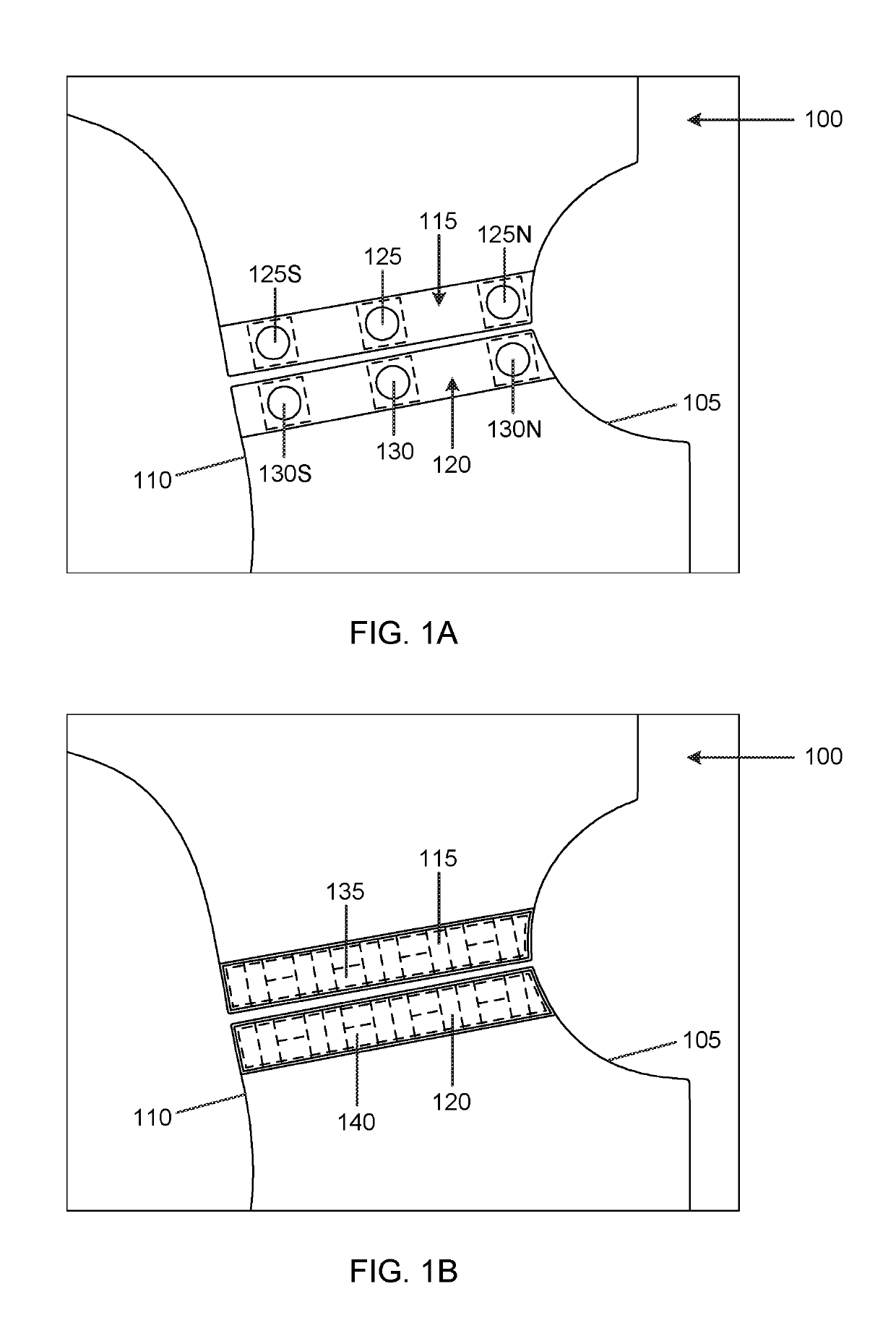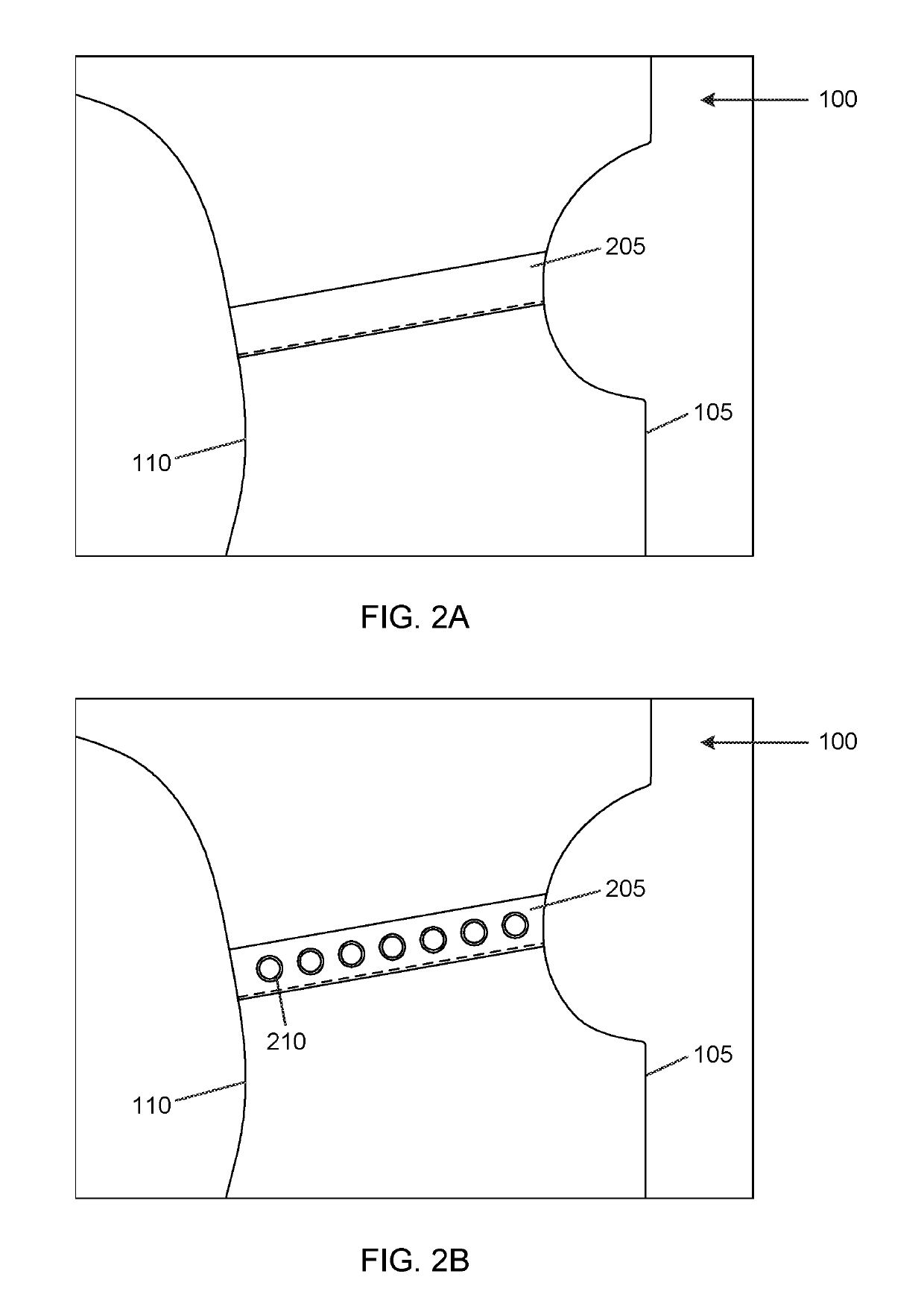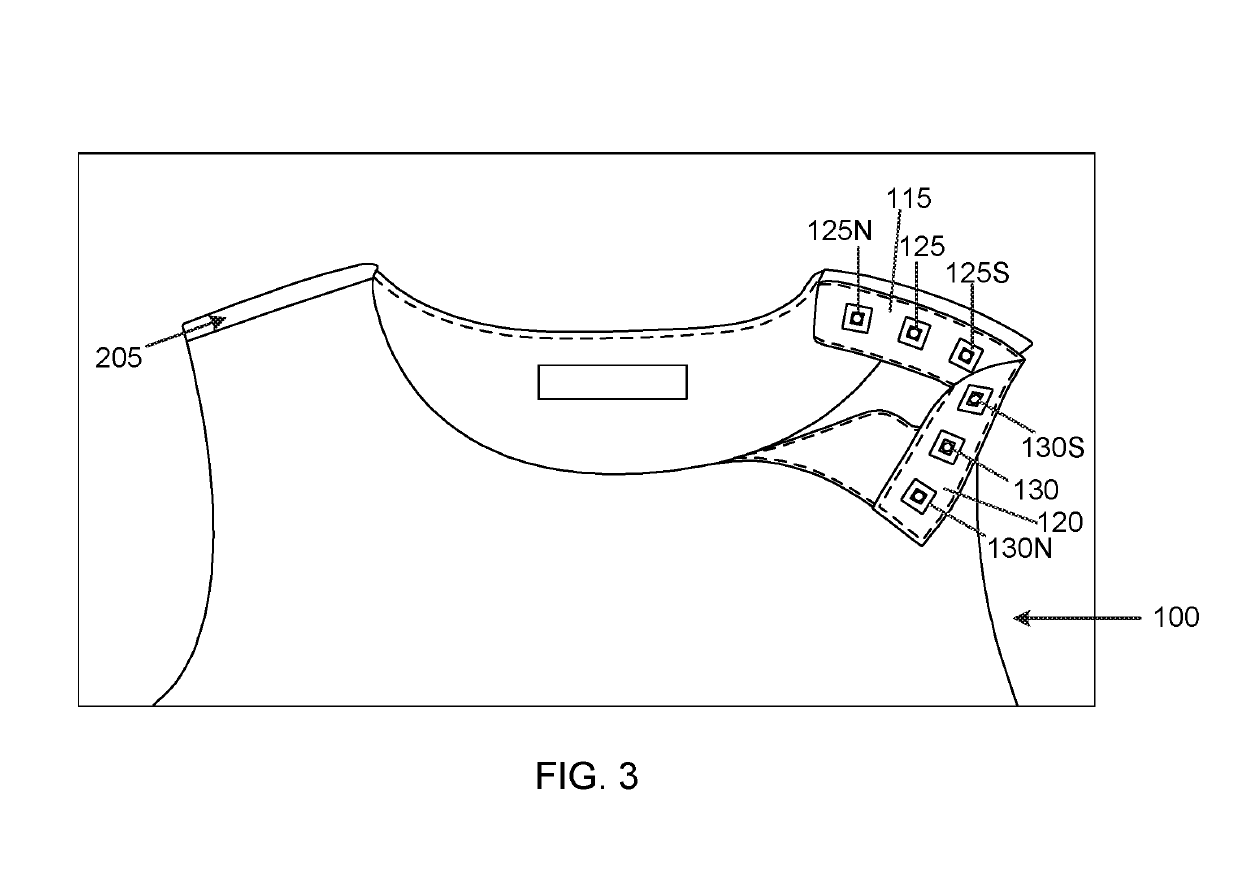Seam closure using magnetic fasteners
a magnetic fastener and seam closure technology, applied in the field of shirt sleeves, can solve the problems of wearer pain, discomfort or irritation, snap fasteners and hook and loop fasteners may still be too difficult to fasten or unfasten, and achieve the effects of high comfort, wearability and style, and easy to put on and take o
- Summary
- Abstract
- Description
- Claims
- Application Information
AI Technical Summary
Benefits of technology
Problems solved by technology
Method used
Image
Examples
Embodiment Construction
[0019]As generally used herein, the adaptive garment of the present invention may refer to but is not limited to a shirt, a dress, a gown, dress shirt, polo shirt, camp shirt, Henley shirt, Charvet shirt, t-shirt, half shirt, singlet, blouse, sweater, cardigan, jumper, vest, tunic, jersey, coat, nightshirt, nightgown, hospital gown, or onesie, either with sleeves of varying lengths or no sleeves, and with or without a collar. The adaptive garment in accordance with the invention may be designed for men, women, children and / or be a unisex design. The adaptive garment merely needs to have at least one shoulder seam, which typically runs from the neckline to the armhole.
[0020]FIGS. 1A and 3 depict an adaptive garment (100) in accordance one embodiment of the present invention. The adaptive garment (100) has at least one shoulder seam closure comprising one or more pairs of magnetic fasteners (125, 130). The shoulder seam closure of FIG. 1A is in the open position, and separated into a ...
PUM
 Login to View More
Login to View More Abstract
Description
Claims
Application Information
 Login to View More
Login to View More - R&D
- Intellectual Property
- Life Sciences
- Materials
- Tech Scout
- Unparalleled Data Quality
- Higher Quality Content
- 60% Fewer Hallucinations
Browse by: Latest US Patents, China's latest patents, Technical Efficacy Thesaurus, Application Domain, Technology Topic, Popular Technical Reports.
© 2025 PatSnap. All rights reserved.Legal|Privacy policy|Modern Slavery Act Transparency Statement|Sitemap|About US| Contact US: help@patsnap.com



